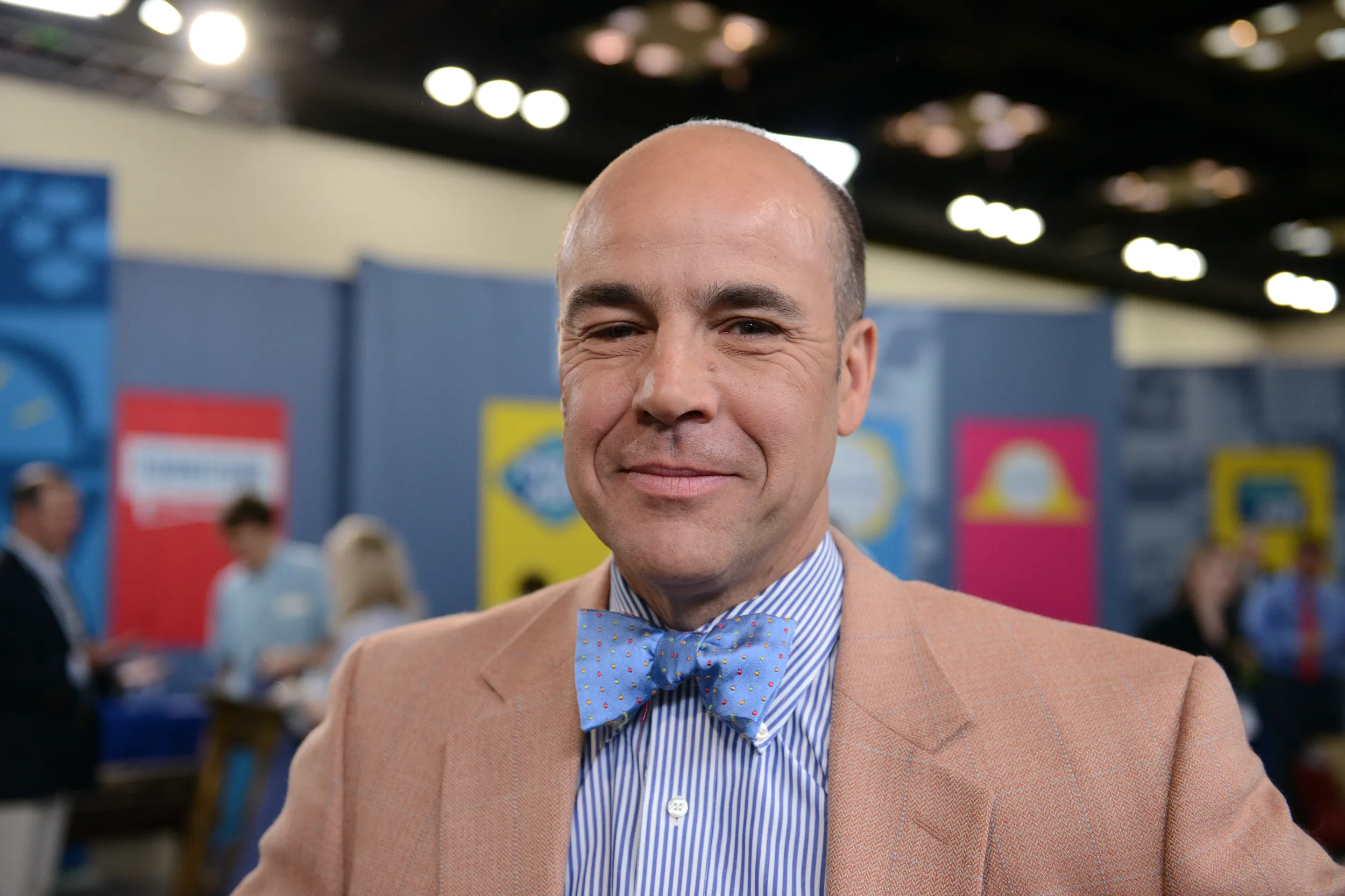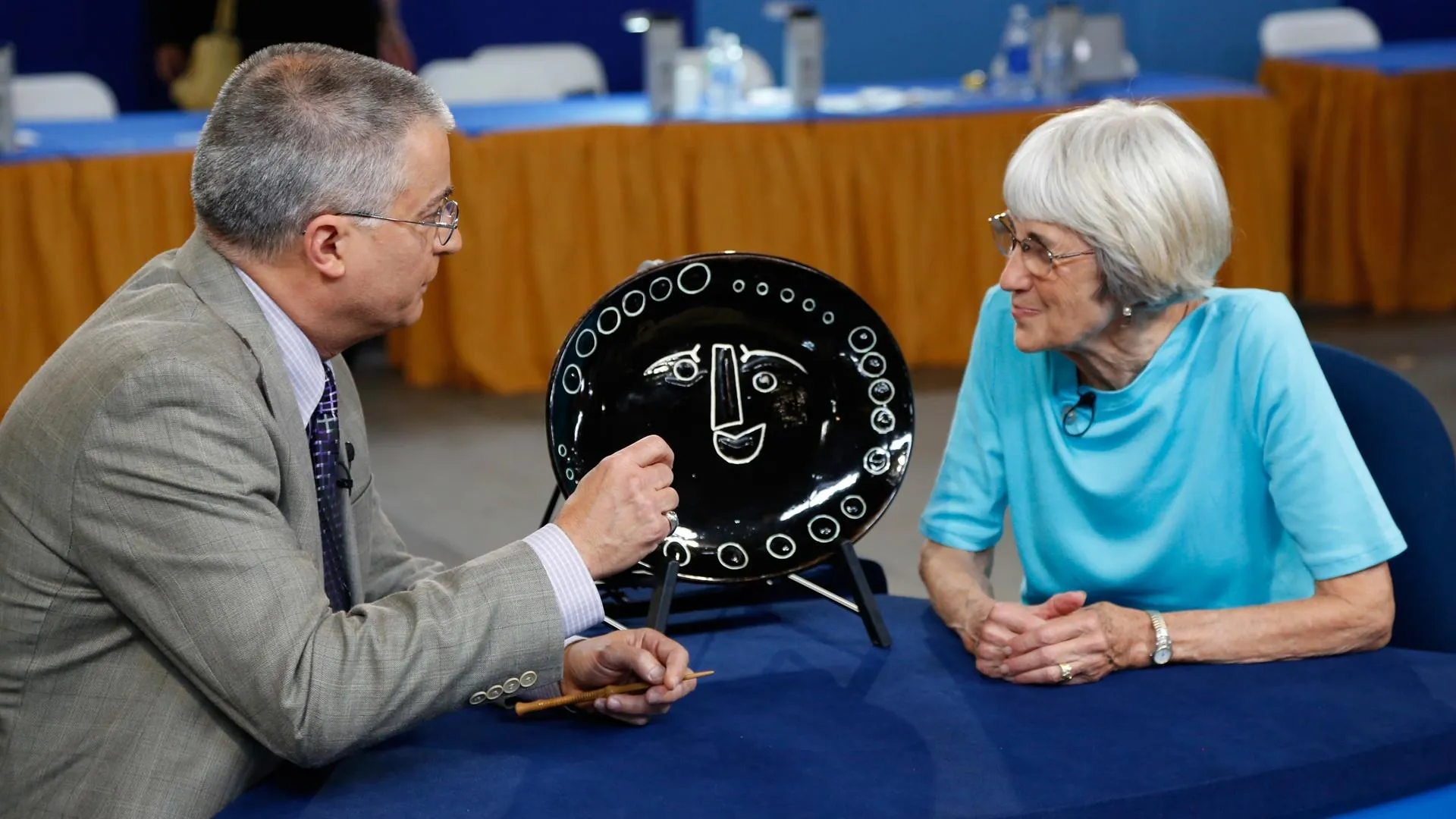GUEST: As far as I know, it's been in my family for many, many years and goes back to my sixth great-grandfather, who was the president of Harvard College.
APPRAISER: President of Harvard, what was his name?
GUEST: Edward Holyoke.
APPRAISER: So there's a building named after him, at least one.
GUEST: Quite a few things named after him. I've traced back down through the different lines, and it finally came through a Nichols family in Danvers, Massachusetts.
APPRAISER: Did he build this chest, did he own this chest? Tell me more about that aspect.
GUEST: I believe he did build it. I've been wondering whether he really built furniture, and also whether it could have been his father, Elizur.
APPRAISER: Which would make it an even earlier piece of furniture.
GUEST: And the reason for that is that the father was a brazier, if that's the way you pronounce it, that did hardware, like the hardware on this. And then I found a record of a chair that he had made, and...
APPRAISER: That Edward had made?
GUEST: That Edward had made in the 1936 Exhibit catalog for Harvard University.
APPRAISER: Now, there's an old expression in the business about how can one tell English from American furniture, and it's all about the accent. When I came in last night to see the furniture that had been delivered ahead of time, I heard this chest saying, "I'm a tiger maple chest of drawers! Come look at me!" And being a native Massachusetts resident, I gravitated immediately to this cute little object. And in looking it over, it turns out to be a remarkable survivor. It's in great condition. It's tiger maple, it's petite, and everything about it screams Massachusetts to me, from the molded top, the drawer construction, and the shape of the feet. And it also screams 18th century to me based on the way you've got some cupping, you've got multiple boards on the top because of the figured wood, and even the way the drawers stick out on the sides like this, that's the result of the shrinkage of the case. But what helps me date it and also what's particularly interesting about this piece is what's in the top drawer. It has this most unusual writing surface. That's virtually unseen on a chest of drawers. Beneath the writing surface is a slide, and compartmentalized slide, where people could keep their papers, quill pens, perhaps ink wells and things. And in that situation, it's virtually unique. So the chest is fantastic. Now, to look at the date, this happens to have its original hardware and glue blocks and things, but the hardware dates from the 1790s. Edward Holyoke died in 1769, so not only did he not own this chest, he didn't make this chest, either. It may have very well descended in the family, but it's not made by the president of Harvard.
GUEST: Oh.
APPRAISER: I'm sorry to tell you that.
GUEST: No, I thought he died in 1800-something.
APPRAISER: Now, the other thing that's interesting is that despite the fact that it wasn't his, it is a valuable piece of furniture. At auction, it would be $10,000 to $20,000.
APPRAISER: Aha. Thank you very much.











